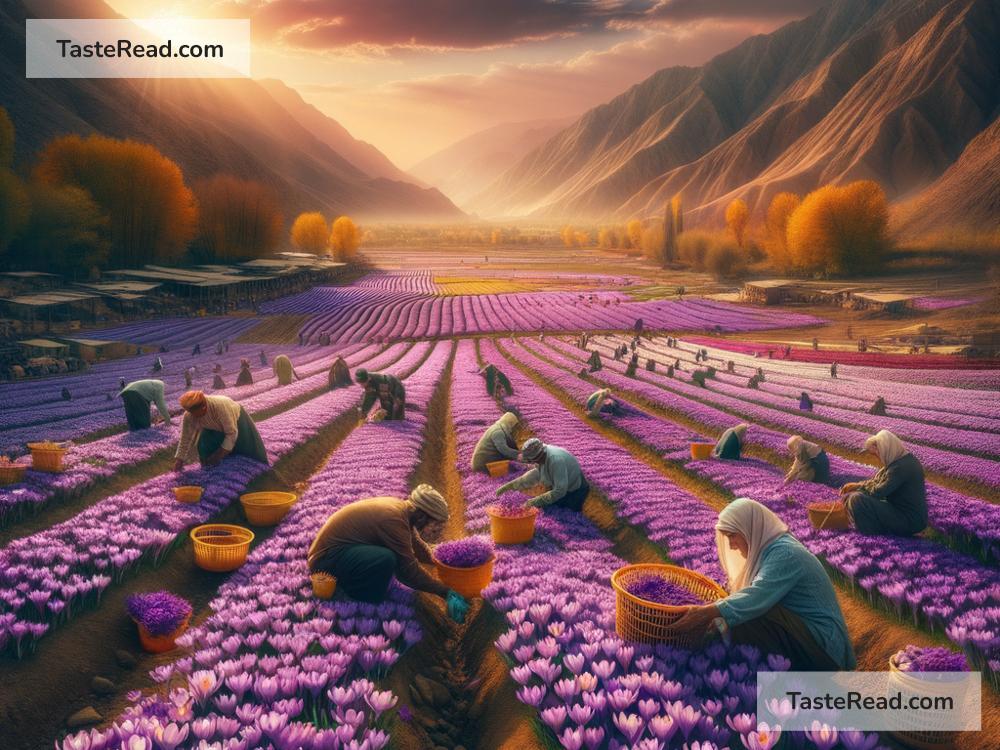The Fascinating Cultivation of Saffron in Persia
Saffron, known as the “red gold,” is one of the most precious spices in the world—both for its exquisite flavor and for its bright golden color. But did you know that its cultivation dates back thousands of years to ancient Persia, now modern-day Iran? Persia has long been known as one of the largest producers of saffron, a skill passed down through generations. The process is as fascinating as the spice itself.
What is Saffron?
Saffron comes from a specific flower called Crocus sativus, often referred to as the saffron crocus. However, it’s not the whole flower that’s used to make the spice—it’s the crimson threads, or stigmas, inside the flower. Each flower contains only three delicate threads, tiny but packed with color, aroma, and flavor. It takes thousands of these flowers to produce just a small amount of saffron!
This labor-intensive nature is one of the reasons saffron is so expensive. But its uses—from culinary applications to medicinal properties—make it highly sought after worldwide.
Saffron in Ancient Persia
The cultivation of saffron has a deep history in Persia. It is believed that saffron may have been grown in this region over 3,000 years ago, making it one of Iran’s oldest agricultural traditions. Historical texts, such as those from Persian poets and scholars, mention saffron alongside luxury goods like gold and silk.
Ancient Persians valued saffron for its vibrant color, which they used to dye their textiles and paint murals. It was also loved for its healing properties, with medicinal uses in reducing pain, improving mood, and treating illnesses. Saffron even carried spiritual significance, often used in ceremonial rituals and blessings across Persian culture.
Ideal Growing Conditions
Persia’s unique climate is one of the reasons saffron thrives there. Iran’s semi-arid environment, with hot summers and cold winters, provides the perfect conditions for the saffron crocus. These flowers prefer well-drained soil and plenty of sunlight, making the highlands of Iran an excellent location for cultivation.
Traditionally, provinces like Khorasan, Yazd, and Fars were the main hubs of saffron farming. Today, the Khorasan region remains the heart of saffron production, particularly South Khorasan. Farmers take pride in their craft and treat saffron cultivation as both an art and a science.
The Cultivation Process
Growing saffron is painstaking but rewarding work. It starts with planting corms (tiny bulbs) of Crocus sativus in fields during late summer or early autumn. These bulbs are placed deep in the soil, and once they are planted, farmers eagerly wait for the flowers to bloom.
The magic begins in autumn when the vivid purple saffron crocus starts flowering. But the harvest is a race against time—flowers must be picked by hand each morning, before the sunlight wilts the delicate petals. It’s an intense process, with farmers scouring their fields to collect hundreds of flowers within hours.
Once collected, the next step is even more delicate. Workers carefully separate the crimson threads from each bloom, often using tweezers due to their tiny size. This part of saffron production requires intense focus, precision, and patience. After the threads are removed, they are dried, typically over gentle heat, to preserve their aroma, flavor, and color.
Sustainable Farming Practices
Persian saffron farmers are mindful of maintaining sustainable practices. Saffron is a water-wise crop, meaning it requires much less water than other plants. This makes it ideal for the dry regions of Iran, where water is scarce. Farmers often rotate saffron fields to preserve soil health and ensure long-term productivity.
The Global Demand for Persian Saffron
Today, saffron from Persia remains a symbol of quality and purity. Iran produces more than 90% of the world’s saffron, exporting to countries across Europe, Asia, and North America. Many chefs and food lovers specifically seek saffron from Iran due to its intense aroma and gorgeous coloring.
However, Persian saffron is not just used for cooking. It has applications in skincare, traditional medicine, and even as a natural dye for fabrics. It’s a versatile product that serves many purposes, ensuring its status as a prized commodity.
Persian Traditions Around Saffron
In Iranian cuisine, saffron is synonymous with celebration. No feast is complete without saffron-infused dishes like saffron rice, kebabs, or desserts. The golden beauty of saffron enhances the food both visually and flavorfully, turning ordinary meals into extraordinary experiences.
Saffron also plays a part in Persian hospitality. Guests are often treated to saffron tea or sherbet, a sweet saffron-infused drink, as a sign of friendship and warmth.
A Living Legacy
The cultivation of saffron in Persia is more than just farming—it’s an art, a tradition, and a way of life. Every thread of saffron carries the care and skill of the farmers who dedicate themselves to this remarkable crop. This living legacy continues to flourish, connecting modern generations to the ancient roots of Persian agriculture.
Next time you savor a saffron-containing dish or admire its golden hue, take a moment to think about its journey. From the fields of Persia to your plate, Persian saffron is not just a spice; it’s a story of hard work, heritage, and human ingenuity.


